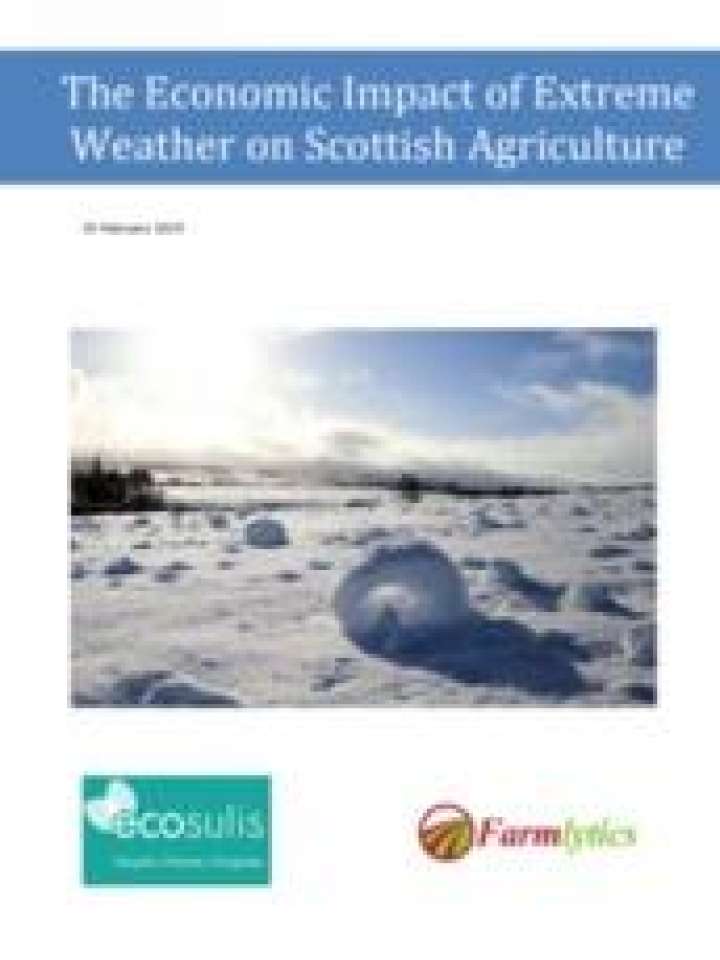The economic impact of extreme weather on Scottish agriculture
This publication explores the consequences of severe weather in 2017/2018 on Scottish agriculture, with respect to livestock numbers, fodder supplies, crop production and other related topics.
The overall losses to Scottish livestock and crops are estimated at £161 million, equivalent to 6 percent of total output in 2017. The biggest impact was on the sheep sector, which lost £45 million, followed by wheat (£34 million), beef (£28 million), and barley (£26 million).
In terms of animal deaths, the sheep sector endured the worst repercussions. The beef industry also suffered substantial losses, but the largest effect on beef was on the cost of forage and increased feeding due to the longer housing period. A longer production cycle affected the beef sector and is likely to be felt for some time because of reduced cattle numbers and availability of cattle for slaughter. The losses are likely to be offset by increased market prices for clean cattle.
The poor weather may have contributed to the decision of some dairy farmers to cease production, however, overall dairy cow numbers rose during 2018 and herd sizes increased. Some farmers may have experienced losses as a result of uncollected milk, and losses to individual dairy farmers were as high as £23,000.
Extreme weather significantly affected cereal yields, but did not influence potato yields. Data on the impact on some other crop sectors, such as horticulture and soft fruit, is not yet readily available to make an assessment.
Farm insurance claims for fire damage in Scotland during 2018 increased approximately 20 percent from 2017. Data indicates that long-term lending to Scottish agriculture did not increase over the period.
Some parts of the food supply chain also suffered. For example, some milk processors picked up the costs of uncollected milk, and the reduced availability of cattle is also impacting beef processors. Malt barley prices rose by as much as £50 per tonne during 2018 and whilst this increased the cost of raw materials for brewers and distillers, these are a relatively small share of overall costs and are not likely to heavily influence the prices of beer and spirits in the long term.
Apart from long-term trends influencing Scottish agriculture, such as a decline in livestock numbers, uncertainty over Brexit is also likely to have left a mark on the sector during this period, but data is not yet available to quantify this supposition.
Explore further
